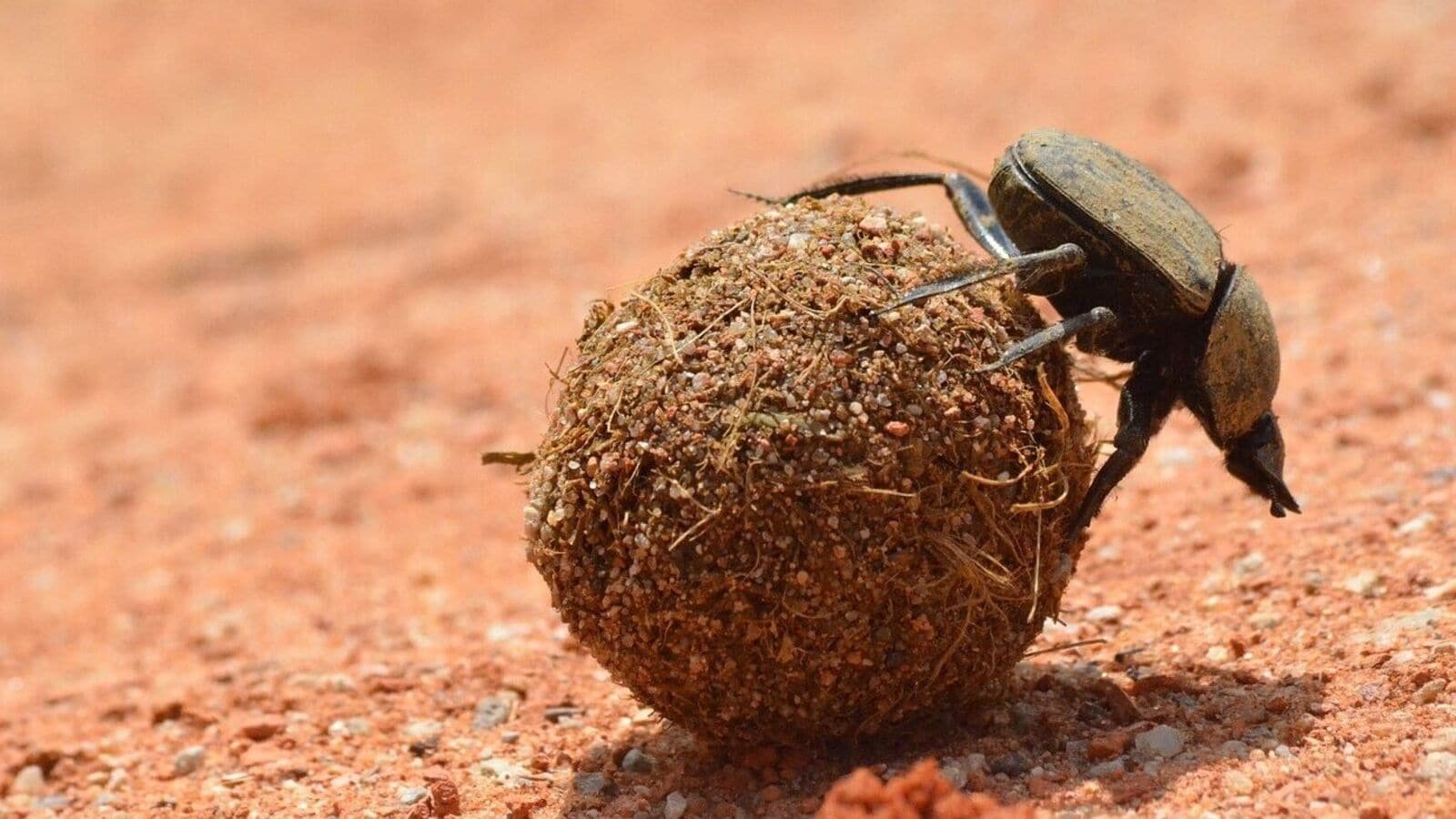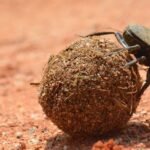THE ENGLISH colonists who brought cattle to Australia in 1788 soon faced a malodorous problem. The dung heaps that gradually and tastefully vanished back home were not going anywhere. Instead, they were growing ever-larger, and becoming infested with bloodsucking flies that wounded the livestock.
It took almost two centuries for the explanation to emerge: Australian dung beetles, more used to marsupial droppings than those from cattle, left the deposits where they lay. It was only when European dung beetles were introduced to the country in 1968 that the Australian cattle industry felt the benefits.
Stories of this kind bear testament to the important services that dung beetles provide. The most iconic of these bugs gather up defecated material into a ball, roll it away and then bury it underground. Others tunnel underneath faeces and collect it without ever being seen. Some just burrow into dung piles and build a den from within which they feast. All of this activity can provide farmers with economic value, though just how much has long been unclear. In a recent paper in the journal Basic and Applied Ecology, Roisin Stanbrook-Buyer, an ecologist at Bethune-Cookman University in Florida, attempted to calculate an exact figure.
She worked with a team of colleagues to study cattle faeces at two ranches and a state park in south-central Florida and found that the waste in a representative pile vanished at an average rate of 10.7 grams per day when dung beetles were present. By contrast, when the beetles were absent, the faeces vanished at a rate of 3.7 grams per day.
This disparity has consequences. Studies have shown cattle avoid eating in an area up to six times larger than the footprint of the dung. At first, the foul smell is responsible. Once the odour diminishes, however, nutrients in the faeces drive the grasses to mature quickly and become unpalatable. Over time, this can lead large sections of grazing fields to go unused and ultimately affect how quickly cattle fatten. Dr Stanbrook-Buyer found that dung beetles counter these negative effects. She calculates that ensuring a healthy beetle presence on all ranches in Florida would increase statewide revenues by more than $1m a year.
This figure may seem small, especially by comparison with the hundreds of millions of dollars that pollinating insects are thought to offer the state each year, but it may well be an underestimate. Among other things, says Dr Stanbrook-Buyer, dung beetles disrupt parasites from spreading in cow populations, help cycle nutrients in the soil and improve water quality by keeping faeces out of streams. Studies conducted in other parts of the world suggest that the sum total of benefits granted to ranchers by the beetles will be in the tens of millions.
The true value of these insects, though, goes far beyond merely increasing beef production. Dung beetles are locked in an evolutionary battle with fungi for access to their favoured food. To gain the upper hand, and keep dung fungi-free, they groom it with a mixture of their own faeces and saliva. To find out how this concoction works, Mario Favila at the Institute of Ecology in Xalapa, Mexico collected gut bacteria from three dung-beetle species and cultured these microbes in the lab.
Working with a team of colleagues, he then exposed them to nine strains of pathogenic fungi that cause serious problems in agriculture. The team reports in Science of Nature that the microbes found in two of the dung-beetle species were very effective at hampering the growth of seven of the fungi. The microbes from the third species, Onthophagus batesi, significantly decreased the growth of all nine. With pathogenic fungi becoming ever more resistant to existing anti-fungals, dung beetles have never looked more attractive.










